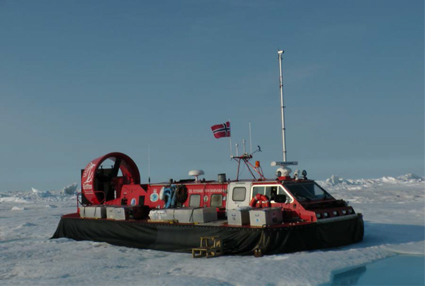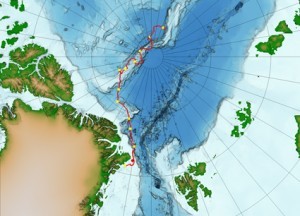
A team of Norwegian scientists have collected unique seismic data that is being hailed as one of most important Arctic Ocean references for years to come.
On 22 August, Professor Yngve Kristoffersen and his colleague Audun Tholfsen returned to Longyearbyen after completing a feat no one has done since Nansen and Johansen – spending the winter alone in the central Arctic Ocean.
This 119 years to the day after Nansen and Johansen returned from the Fram I expedition in 1896.
The seismic data collected from the Lomonosov Ridge and the Morris Jesup plateau will provide new knowledge of the geological development of the northern marine on the Barents Sea shelf .
Technology has progressed since the Victorian era. This time, the wooden ship Fram and Nansen’s two kayaks had been replaced by the aptly named hovercraft Sabvaaba (which in Inuit means “floats quickly above”).
The two researchers were placed on the ice near the North Pole in August 2014 by the German research ice breaker Polarstern.
With them, they had scientific measurement equipment and supplies for 18 months.
The researchers, who are based at the Nansen Environmental and Remote Sensing Centre (NERSC) and the University of Bergen, crossed the Lomonosov ridge five times, and then the Morris Jesup plateau north of Greenland for good measure.
Most of this route passes through the most inaccessible areas of the Arctic Ocean. Here, the ice is so thick that you need a nuclear icebreaker to get there. Unless you happen to have a hovercraft.
But even with a nuclear icebreaker, it is virtually impossible to collect seismic data there. As a result, the 1,000kms of good seismic collected by the 2014/15 Fram expedition using their ice drift technique is a unique data set.
In addition to the seismic data, the expedition also collected almost 2,000kms of a number of other data from air, ice, and water.
The Norwegian Petroleum Directorate has been one of the sponsors of the expedition.
